General
A place for discussions about anything
Winding in That Big Kite with a KAP Camera - The Stratospool Story
The following is an article that I authored for the 1st Q 2014 AKA Kiting Magazine on the Stratospool story including an interview with Russell Jolly. Enjoy the stratospool story and a few interesting photos at the bottom of this article. Comments welcome!
WW
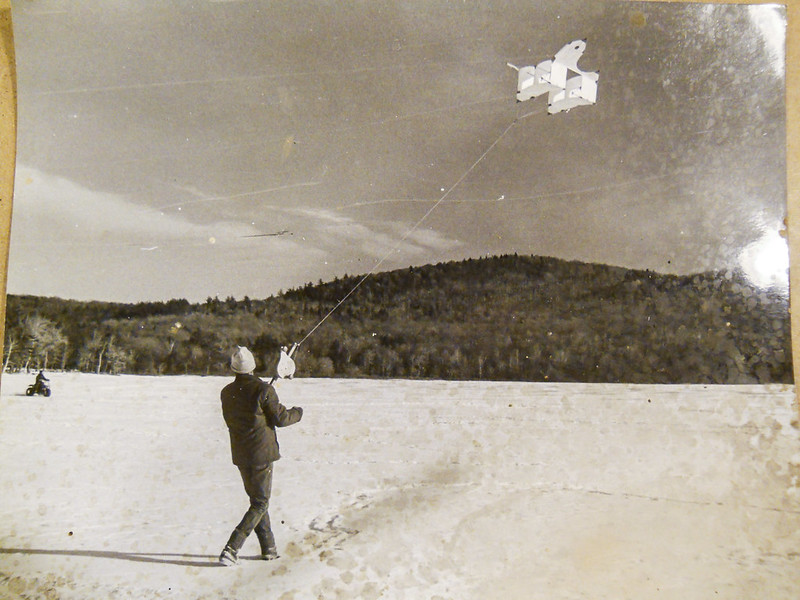
Taking pictures from a kite requires many skills. One basic skill is pulling in large kites out of the sky to get your camera and kite back safely on the ground in one piece. One of the best pieces of equipment to help with this important tasks is the Stratospool kite reel.
The focus of this KAPtions column is on the Stratospool kite reel and how it is used with Kite Aerial Photography. This story includes information collected during an interview with Russell Jolly, the inventor of the Stratospool as well as my personal experiences in using and in later years building my own Wind Watcher variation of the Stratospool kite reel. Russ and I did the interview in mid-January 2014 where he shared his story of kite flying and reel building. The Stratospool story end with a look to the future of the Stratospool.
The early days
Russ grew up as a young man working with his Dad as a carpenter in New England. He picked up his inventive DNA and mechanical drawing skills during this time. Formal studies in Civil Engineering, a period in the US Coast Guard and hands on experience in maintaining old farm equipment added to his skills and experience.
Kite flying entered the picture for Russ in the early 1980s with friends in northern New Jersey, USA. During one of these fun flying days with single line kites (deltas, box kites) a friend asked Russ for help in pulling in a kite using a primitive H style winder. After a few minutes of using the H winder Russ felt there had to be a better way. This was the inspiration for designing the Stratospool kite reel.
Simple wooden reels were fabricated in Russ’s wood shop and tested out in a large flying field (frozen pond next to his wood shop). The initial prototype winders were good for letting out line but not so good in controlling the pace or speed.
Full size mechanical drawings came next. Enhancements included a simple off-set lever brake design that was inspired from an old piece of equipment on Russ’s farm. Several iterations of drawings followed refining and working up the design on paper as a proof of concept (this was pre Auto CAD days!).
Construction of the first Stratospool with the off-set brake followed shortly afterwards in 1988. The first Stratospool reel worked as intended in the drawings with the integrated brake and represents the basic design in all reels that followed.
Commercialization
Russ built 5 or 6 additional Stratospool kite reels tweaking the design, fit and finish with each one. Next Russ expanded the design to two different sizes to cover different size kites and kite line strengths. The small Stratospools were given the designation of “8” and was designed for smaller kites with lines strengths in the 50-75 lbs. category. The medium size Stratospool was designated “16” and covered kite line in the 150 lbs range. A larger version Stratospool “24” came later with a focus large kites with line in the 200-250 lbs range. Russ considered submitting a US patent for the Stratospool design but after consulting a few legal experts he decided against this path and just copyrighted the design without a patent.
Wood made up the construction materials for the Stratospools with Baltic Birch plywood as the main ingredient for the reels. The 8 and 16 reels were built with 3/8 inch Baltic Birch and the 24 was built with ½ inch Baltic Birch.
Given his skills as a carpenter and his readily available wood shop, Russell explored the idea of building and selling the Stratospool kite reel. Russ took the plunge and early 1988 he sent a letter to a small kite retailer (IntoTheWind) to see if they would be interested in selling his Stratospool kite reel (this was pre-internet days). To his surprise he received a phone call a few days later from IntoTheWind who expressed interest in his product and requested that he send them a reel to try out. A short negotiation followed and concluded with an agreement to proceed with a commitment of a guaranteed one year supply of Stratospools.
Orders soon followed with 10 to 25 Stratospools per month flowing through Russ’s wood shop. Peak production averaged about 200 Stratospools per year.
The Stratospools showed up faithfully each year in the InToTheWind kite catalog. Very little advertising beyond the kite catalog took place.
The Stratospools were composed of 7 individual elements. Production process included special jigs to hold the working pieces in place. Batch processing was used to make a run of the same component when supplies ran low. This semi mass production permitted Russ to build a single Statospool in about 4 hours.
Safety warnings were added to instruct users to be aware of the spinning knobs when the line was going out fast (both Russ and I have experienced a few bruises over the years from the flying knobs!).
Russ stopped making the Stratospools in 1995. The reasons behind this were several fold. The prime reason was lack of profit compared to the labor and material costs. Russ did explore increasing the selling price with IntoThe Wind but the request was declined. Russ was paid roughly 50% of the retail selling price. A lack of interest combined with a new focus on more profitable cabinet making brought the decision to stop Stratospool production to a head. After 7 years of production the last Stratospool order was completed in 1995. Over 1000 Stratospool kite reels were produced during this period.
A Users Perspective (Wind Watcher)
One word sums up my experiences in using the Stratospool. Dream. Why – the ease of rapidly binging in a kite from high in the sky in just a few minutes….simply puts a smile on my face. Late in 1988 I purchased a Stratospool 8 from IntoTheWind. A year later I purchased a Stratospool 16. They immediately became one of my favorite pieces of kite equipment. The reels were high quality, had smooth operation, strong and durable under most circumstances. The 16 seemed to be the best fit for the medium to large kites that I was flying with 150 lbs kite line. A few years passed and due to wear and tear I purchased a second Stratospool 16.
One of the main attractions of the Stratospool is the capability to wind in a kite from the sky while under tension. This is both a strength and a potential weakness. Technically there is a lot going on with the stress placed on the Stratospool reel components while winding under tension. The cumulative force or stress from each turn of the crank adds significant stress to the reel. On a typically windy day a kite maybe pulling hard at close to 10 lbs of line force. Each turn of the crank adds 10 lbs of force. Turn the crank 100 times and the force on the reel climbs quickly to over 1000 lbs. Stratospools need to be built strong to support these pressures. A short story illustrates this point. A few years back I was working in Rome, Italy. I was KAPing over the Coliseum and had to wind in a fair bit of line (several hundred meters) in a light rain with a moderate line force. Later that night back in my hotel room I kept hearing a mysterious cracking noise in my room. After a bit of inspection I isolated the source of the cracking noise to one of my early “hoop reel Stratospools” that I was flying with over Rome. The cumulative line stress on the reel from winding was slowly crushing the reel with large fractures showing up in the components….. I needed a stronger reel….
KAP and the Stratospool
Kite Aerial Photography (KAP) requires special kite flying skills combined with photography skills. Kite line control is critical with KAP. A few of the reasons reasons I always KAP with one of my Stratospools are listed below.
First is maintaining steady kite line tension while in flight with a KAP rig and camera hanging on the kite line. The Stratospool permits rapid winding during lulls. This helps keep the KAP rig and camera up in the air during lulls. During gust the Stratospool can quickly play out kite line to avoid the kite being overpowered during flight. Adjusting the rate of line play out is easily controlled with the Stratospool.
Second is situational control of the kite in tight flying spaces. KAPers sometimes fly in very tight spaces in order to KAPture a selected photographic subject. A large open flying field where one could run backwards against the wind during a lull may not always be available. A good example of this is a narrow boat dock or bridge. Lateral movement many times is restricted. Under these conditions kite line control (taking in or letting out) needs to be carefully monitored and controlled. The Stratospool can rapidly pull in line (equivalent to running backwards against the wind) or letting line out quickly at a controlled pace that will keep the KAP rig and camera in the air.
Third factor is speed. It takes time to launch a kite, let out line and at the end retrieve the kite from the air. The Stratospool helps with all phases of kite flight. Many of my KAP sessions are after a long day of work with the sun setting leaving just minutes to get the kite in the air, take a few pictures and pull everything down and pack up as it gets dark. The Stratospool speeds the process at each step with the biggest gains being the rapid winding in of the kite under tension at the end of the flight.
Mother of necessity – Building your own Stratospool.
I fly kites a lot, typically 2-3 times per week and just about all the time with one of my Stratospools. The high usage rates and cumulative stress took their toll on my Stratospools. One by one my Stratospools, after hundreds of flights, failed and had to be taken out of service. The failures were always slow motion affairs, never a sudden catastrophic failure. The primary component to fail was the main reel due to the cumulative stress of winding under tension. The reel failures were expressed by deforming and or delaminating and cracking of the Baltic birch plywood. The reel has two faces (parts). The side of the reel that presses against the main bar (and brake pads) I call the “Slip Plate”. Stresses on the reel warped the slip plate to a point where you could no longer crank in the reel making it useless for its intended purpose. The side of the reel away from the main bar and with the crank handles I call the “Crank Plate”. Failures on the crank plate included warping and fractures around the attachment points and in extreme cases the crank plate pulls away from the reel core.
After several years of use flying my kites just about every week year round….and with several hundred flights …I wore out both Stratospools….and after much searching I discovered to my dismay that the Stratospool kite reels were no longer available.
As a biochemist….my wood working skills are not the greatest. I began my journey to construct my own Wind Watcher variant of the Stratospool kite reel out of pure necessity. Over the period of 2000 to 2013 I built 8 or 9 WW Stratospools. The early designs were crude, weak and did not last long. I learned from each failure and by the 5th WW Stratospool the weak areas were corrected and reel yielded a solid workable design.
I travel a lot for work (both a blessing and a curse). The Stratospools were always too big to take along on these trips and my brain kept thinking of new ways to make the reel more portable. During this time I also became fascinated with Kite Aerial Photography (combining a few interest into one (sailing, Frisbee, photography and kite flying)). Ideals from each of these disciplines contributed to my current WW Stratospool kite reel. Specific enhancements included:
• a collapsible bar and reel (to fit in a checked bag),
• modified “U Bolt nose” to guide the kite line evenly across the face of the reel,
• steel guide point to protect kite line feed points
• a quick connect strap to wrap around your waist or other object to anchor the reel,
• use of Teflon slider pads for the slip plate / bar friction points
• elimination of the off-set brake
• larger diameter reels to increase the speed of kite line retrieval
• low profile reel (to better fit in checked bag)
• stronger (thicker) slip and crank plate components to survive intense pressures
• use of foldable crank handles (for easy packing)
• reinforcing brackets on the main bar for strength
• use of carriage bolts to hold the main reel together
Evolution of the portable Wind Watcher Stratospool design has permitted me to travel just about every week with an opportunity to fly kites and take pictures around the world.
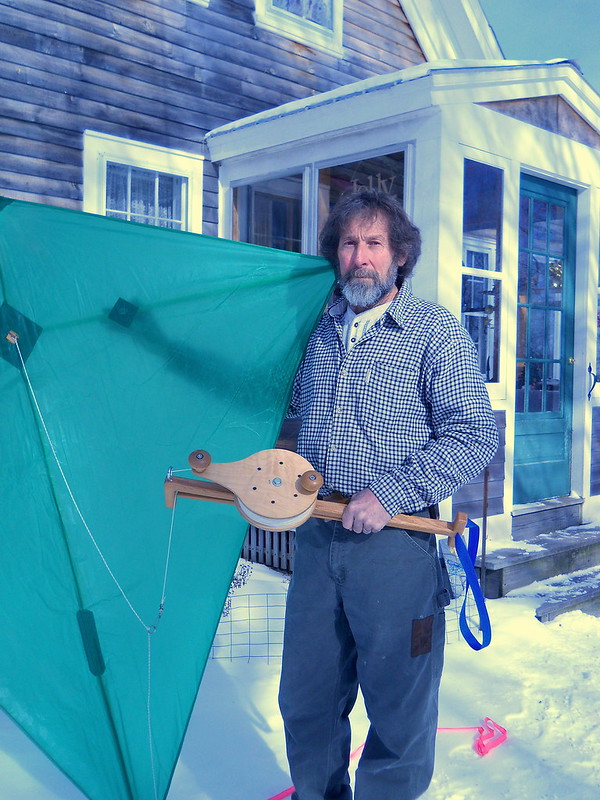
The future
The Kite Aerial Photography Discussion Forum has had multiple active kite reel discussion threads spanning multiple years. I hosted a Google+ hangout to review design options for further enhancements. Well over 20 individuals have designed and made their own Stratospool variations.
Late in 2013 Russ Jolly on whim googled the term “Stratospool” and was stunned to find a number of people using and building Stratospools. Russ quickly narrowed his search down to the KAP Discussion Forum and reached out to the KAP community which seems to be the center of gravity for the continued evolution of the Stratospool.
Good news: Russ is planning to resume production of the original Stratospool (and hopefully a few enhancements) in 2014. Russ and I discussed potential avenues for the future. A few of the subjects included:
• Metal reels from Asia
• Advance designs and materials discussed on the KAP forum including the use of carbon fiber
• Distribution via on-line web site
• Russ’s initial focus will be on his wood Stratospools
Where to go for more information:
• Russ Jolly - deerfieldvalleywoodworking.com
• Google “Windwatcher kite Stratospool” to explore many discussions on this subject.
• Google “Kite Aerial Photography Stratospool”
• Google: “Windwatcher Stratospool Testing – YouTube” for a short video on the use of the WW Stratospool.
Enjoy a few pictures of Russ’s Stratospools, kites and tools below. Also see a few pictures of the WindWatcher Stratospools below and a whole bunch more here on flickr .
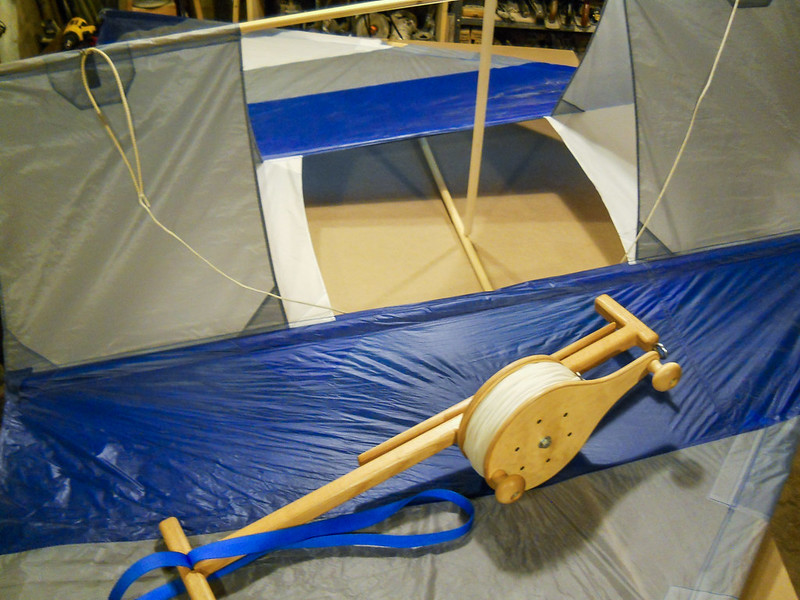
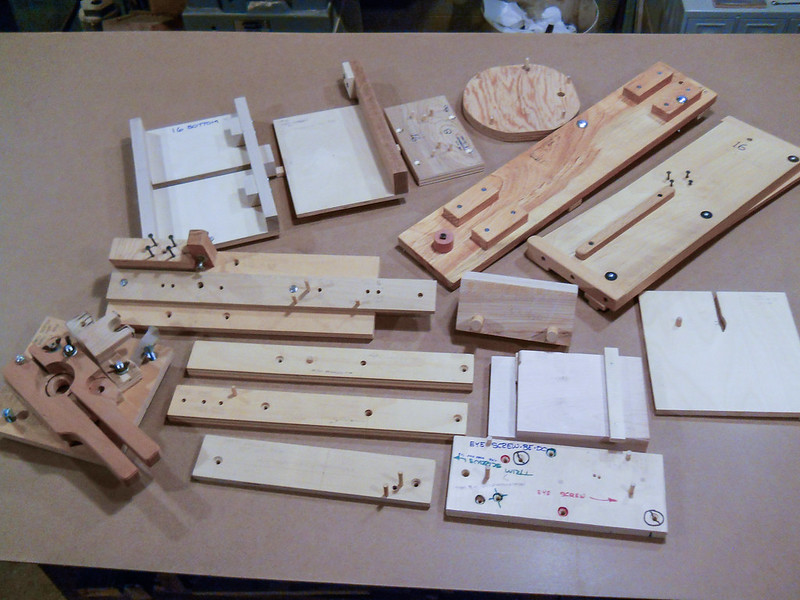
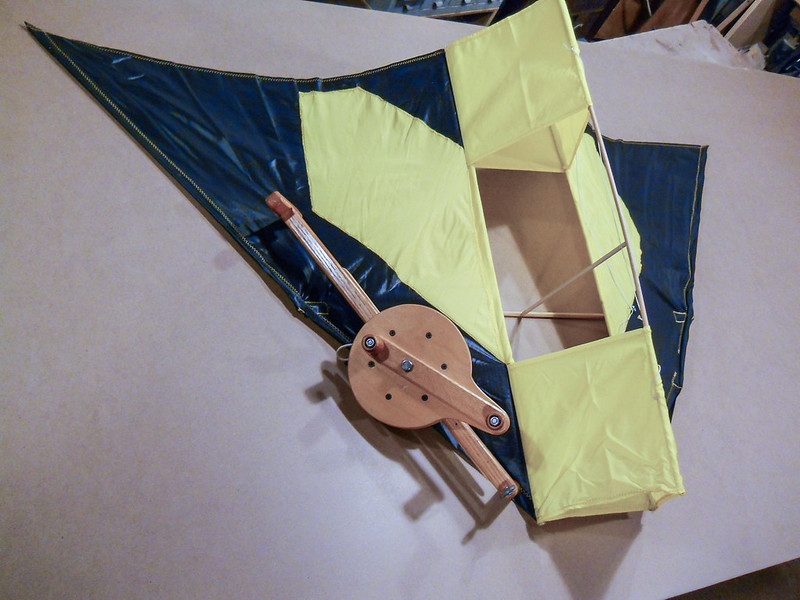
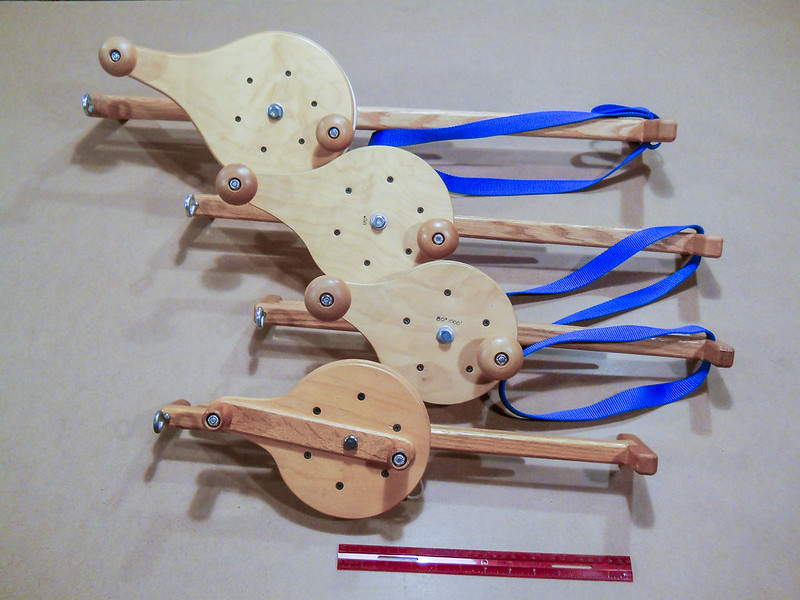
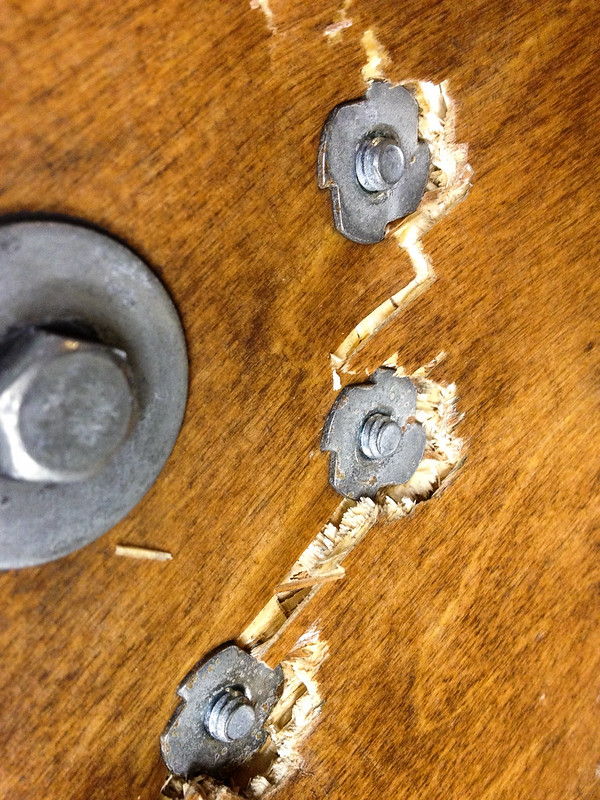
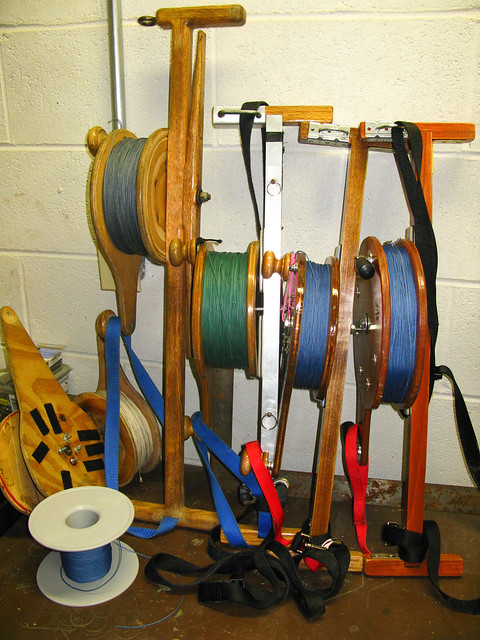
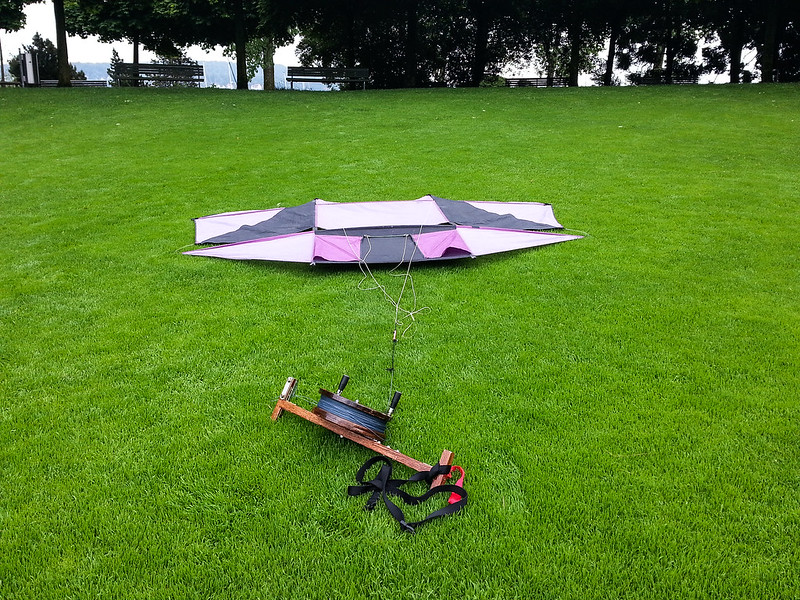
WW

Taking pictures from a kite requires many skills. One basic skill is pulling in large kites out of the sky to get your camera and kite back safely on the ground in one piece. One of the best pieces of equipment to help with this important tasks is the Stratospool kite reel.
The focus of this KAPtions column is on the Stratospool kite reel and how it is used with Kite Aerial Photography. This story includes information collected during an interview with Russell Jolly, the inventor of the Stratospool as well as my personal experiences in using and in later years building my own Wind Watcher variation of the Stratospool kite reel. Russ and I did the interview in mid-January 2014 where he shared his story of kite flying and reel building. The Stratospool story end with a look to the future of the Stratospool.
The early days
Russ grew up as a young man working with his Dad as a carpenter in New England. He picked up his inventive DNA and mechanical drawing skills during this time. Formal studies in Civil Engineering, a period in the US Coast Guard and hands on experience in maintaining old farm equipment added to his skills and experience.
Kite flying entered the picture for Russ in the early 1980s with friends in northern New Jersey, USA. During one of these fun flying days with single line kites (deltas, box kites) a friend asked Russ for help in pulling in a kite using a primitive H style winder. After a few minutes of using the H winder Russ felt there had to be a better way. This was the inspiration for designing the Stratospool kite reel.
Simple wooden reels were fabricated in Russ’s wood shop and tested out in a large flying field (frozen pond next to his wood shop). The initial prototype winders were good for letting out line but not so good in controlling the pace or speed.
Full size mechanical drawings came next. Enhancements included a simple off-set lever brake design that was inspired from an old piece of equipment on Russ’s farm. Several iterations of drawings followed refining and working up the design on paper as a proof of concept (this was pre Auto CAD days!).
Construction of the first Stratospool with the off-set brake followed shortly afterwards in 1988. The first Stratospool reel worked as intended in the drawings with the integrated brake and represents the basic design in all reels that followed.
Commercialization
Russ built 5 or 6 additional Stratospool kite reels tweaking the design, fit and finish with each one. Next Russ expanded the design to two different sizes to cover different size kites and kite line strengths. The small Stratospools were given the designation of “8” and was designed for smaller kites with lines strengths in the 50-75 lbs. category. The medium size Stratospool was designated “16” and covered kite line in the 150 lbs range. A larger version Stratospool “24” came later with a focus large kites with line in the 200-250 lbs range. Russ considered submitting a US patent for the Stratospool design but after consulting a few legal experts he decided against this path and just copyrighted the design without a patent.
Wood made up the construction materials for the Stratospools with Baltic Birch plywood as the main ingredient for the reels. The 8 and 16 reels were built with 3/8 inch Baltic Birch and the 24 was built with ½ inch Baltic Birch.
Given his skills as a carpenter and his readily available wood shop, Russell explored the idea of building and selling the Stratospool kite reel. Russ took the plunge and early 1988 he sent a letter to a small kite retailer (IntoTheWind) to see if they would be interested in selling his Stratospool kite reel (this was pre-internet days). To his surprise he received a phone call a few days later from IntoTheWind who expressed interest in his product and requested that he send them a reel to try out. A short negotiation followed and concluded with an agreement to proceed with a commitment of a guaranteed one year supply of Stratospools.
Orders soon followed with 10 to 25 Stratospools per month flowing through Russ’s wood shop. Peak production averaged about 200 Stratospools per year.
The Stratospools showed up faithfully each year in the InToTheWind kite catalog. Very little advertising beyond the kite catalog took place.
The Stratospools were composed of 7 individual elements. Production process included special jigs to hold the working pieces in place. Batch processing was used to make a run of the same component when supplies ran low. This semi mass production permitted Russ to build a single Statospool in about 4 hours.
Safety warnings were added to instruct users to be aware of the spinning knobs when the line was going out fast (both Russ and I have experienced a few bruises over the years from the flying knobs!).
Russ stopped making the Stratospools in 1995. The reasons behind this were several fold. The prime reason was lack of profit compared to the labor and material costs. Russ did explore increasing the selling price with IntoThe Wind but the request was declined. Russ was paid roughly 50% of the retail selling price. A lack of interest combined with a new focus on more profitable cabinet making brought the decision to stop Stratospool production to a head. After 7 years of production the last Stratospool order was completed in 1995. Over 1000 Stratospool kite reels were produced during this period.
A Users Perspective (Wind Watcher)
One word sums up my experiences in using the Stratospool. Dream. Why – the ease of rapidly binging in a kite from high in the sky in just a few minutes….simply puts a smile on my face. Late in 1988 I purchased a Stratospool 8 from IntoTheWind. A year later I purchased a Stratospool 16. They immediately became one of my favorite pieces of kite equipment. The reels were high quality, had smooth operation, strong and durable under most circumstances. The 16 seemed to be the best fit for the medium to large kites that I was flying with 150 lbs kite line. A few years passed and due to wear and tear I purchased a second Stratospool 16.
One of the main attractions of the Stratospool is the capability to wind in a kite from the sky while under tension. This is both a strength and a potential weakness. Technically there is a lot going on with the stress placed on the Stratospool reel components while winding under tension. The cumulative force or stress from each turn of the crank adds significant stress to the reel. On a typically windy day a kite maybe pulling hard at close to 10 lbs of line force. Each turn of the crank adds 10 lbs of force. Turn the crank 100 times and the force on the reel climbs quickly to over 1000 lbs. Stratospools need to be built strong to support these pressures. A short story illustrates this point. A few years back I was working in Rome, Italy. I was KAPing over the Coliseum and had to wind in a fair bit of line (several hundred meters) in a light rain with a moderate line force. Later that night back in my hotel room I kept hearing a mysterious cracking noise in my room. After a bit of inspection I isolated the source of the cracking noise to one of my early “hoop reel Stratospools” that I was flying with over Rome. The cumulative line stress on the reel from winding was slowly crushing the reel with large fractures showing up in the components….. I needed a stronger reel….
KAP and the Stratospool
Kite Aerial Photography (KAP) requires special kite flying skills combined with photography skills. Kite line control is critical with KAP. A few of the reasons reasons I always KAP with one of my Stratospools are listed below.
First is maintaining steady kite line tension while in flight with a KAP rig and camera hanging on the kite line. The Stratospool permits rapid winding during lulls. This helps keep the KAP rig and camera up in the air during lulls. During gust the Stratospool can quickly play out kite line to avoid the kite being overpowered during flight. Adjusting the rate of line play out is easily controlled with the Stratospool.
Second is situational control of the kite in tight flying spaces. KAPers sometimes fly in very tight spaces in order to KAPture a selected photographic subject. A large open flying field where one could run backwards against the wind during a lull may not always be available. A good example of this is a narrow boat dock or bridge. Lateral movement many times is restricted. Under these conditions kite line control (taking in or letting out) needs to be carefully monitored and controlled. The Stratospool can rapidly pull in line (equivalent to running backwards against the wind) or letting line out quickly at a controlled pace that will keep the KAP rig and camera in the air.
Third factor is speed. It takes time to launch a kite, let out line and at the end retrieve the kite from the air. The Stratospool helps with all phases of kite flight. Many of my KAP sessions are after a long day of work with the sun setting leaving just minutes to get the kite in the air, take a few pictures and pull everything down and pack up as it gets dark. The Stratospool speeds the process at each step with the biggest gains being the rapid winding in of the kite under tension at the end of the flight.
Mother of necessity – Building your own Stratospool.
I fly kites a lot, typically 2-3 times per week and just about all the time with one of my Stratospools. The high usage rates and cumulative stress took their toll on my Stratospools. One by one my Stratospools, after hundreds of flights, failed and had to be taken out of service. The failures were always slow motion affairs, never a sudden catastrophic failure. The primary component to fail was the main reel due to the cumulative stress of winding under tension. The reel failures were expressed by deforming and or delaminating and cracking of the Baltic birch plywood. The reel has two faces (parts). The side of the reel that presses against the main bar (and brake pads) I call the “Slip Plate”. Stresses on the reel warped the slip plate to a point where you could no longer crank in the reel making it useless for its intended purpose. The side of the reel away from the main bar and with the crank handles I call the “Crank Plate”. Failures on the crank plate included warping and fractures around the attachment points and in extreme cases the crank plate pulls away from the reel core.
After several years of use flying my kites just about every week year round….and with several hundred flights …I wore out both Stratospools….and after much searching I discovered to my dismay that the Stratospool kite reels were no longer available.
As a biochemist….my wood working skills are not the greatest. I began my journey to construct my own Wind Watcher variant of the Stratospool kite reel out of pure necessity. Over the period of 2000 to 2013 I built 8 or 9 WW Stratospools. The early designs were crude, weak and did not last long. I learned from each failure and by the 5th WW Stratospool the weak areas were corrected and reel yielded a solid workable design.
I travel a lot for work (both a blessing and a curse). The Stratospools were always too big to take along on these trips and my brain kept thinking of new ways to make the reel more portable. During this time I also became fascinated with Kite Aerial Photography (combining a few interest into one (sailing, Frisbee, photography and kite flying)). Ideals from each of these disciplines contributed to my current WW Stratospool kite reel. Specific enhancements included:
• a collapsible bar and reel (to fit in a checked bag),
• modified “U Bolt nose” to guide the kite line evenly across the face of the reel,
• steel guide point to protect kite line feed points
• a quick connect strap to wrap around your waist or other object to anchor the reel,
• use of Teflon slider pads for the slip plate / bar friction points
• elimination of the off-set brake
• larger diameter reels to increase the speed of kite line retrieval
• low profile reel (to better fit in checked bag)
• stronger (thicker) slip and crank plate components to survive intense pressures
• use of foldable crank handles (for easy packing)
• reinforcing brackets on the main bar for strength
• use of carriage bolts to hold the main reel together
Evolution of the portable Wind Watcher Stratospool design has permitted me to travel just about every week with an opportunity to fly kites and take pictures around the world.

The future
The Kite Aerial Photography Discussion Forum has had multiple active kite reel discussion threads spanning multiple years. I hosted a Google+ hangout to review design options for further enhancements. Well over 20 individuals have designed and made their own Stratospool variations.
Late in 2013 Russ Jolly on whim googled the term “Stratospool” and was stunned to find a number of people using and building Stratospools. Russ quickly narrowed his search down to the KAP Discussion Forum and reached out to the KAP community which seems to be the center of gravity for the continued evolution of the Stratospool.
Good news: Russ is planning to resume production of the original Stratospool (and hopefully a few enhancements) in 2014. Russ and I discussed potential avenues for the future. A few of the subjects included:
• Metal reels from Asia
• Advance designs and materials discussed on the KAP forum including the use of carbon fiber
• Distribution via on-line web site
• Russ’s initial focus will be on his wood Stratospools
Where to go for more information:
• Russ Jolly - deerfieldvalleywoodworking.com
• Google “Windwatcher kite Stratospool” to explore many discussions on this subject.
• Google “Kite Aerial Photography Stratospool”
• Google: “Windwatcher Stratospool Testing – YouTube” for a short video on the use of the WW Stratospool.
Enjoy a few pictures of Russ’s Stratospools, kites and tools below. Also see a few pictures of the WindWatcher Stratospools below and a whole bunch more here on flickr .








Comments
RRL
This reminds me that I REALLY need a stratospool... :-)
I wish my wood working skills were better. I hesitate between trying to build one and waiting for a commercial product...
I mainly thanks to your promotion, I started to use the stratospool. Currently, it is an essential component of each KAP session. Security, in conjunction with the comfort of flying a kite, do me a big fan of stratospool!
Martin Roe has a pretty detailed page on the subject: https://meerstone.wordpress.com/2012/10/02/stratospool-kite-reel/comment-page-1/
As does Charles Hall: http://robroy.dyndns.info/KAP/KiteReels/Stratospool/
-----
Wayback: Maybe something like Albert den Haan's capstan-style reel is what you're thinking about?
http://hackingonkitebits.blogspot.ca/2012/02/please-note-graphics-in-early-part-of.html
1) For a "beefy" stratospool are people using a 5/16 or 3/8 inch bolt for the reel axis? Are there flexibility or bending issues with the bolt?
2) Are people just using a simple drilled hole in the main bar for the reel axis, or a bushing, or roller bearings?
3) Have people had failure of the main bar, or the pivot point in the bar?
4) It looks like the straps on the Windwatcher reels are sewn loops. Is that correct? Are there suppliers for climbing buckles that people trust for anchoring the reel with a largish kite pulling?
5) Other than the reel sides cracking, what sort of failures have people seen?
Thanks! Wish I'd made it on that conference call a while back. I'm using carbon fiber for the spool itself.
- the 5/16 bolt works fine - no failures
- main bar - drilled hole with nylon bushing to fit the 5/16 bolt - no failures over hundreds (thousands) of flights.
- strap - I keep it simple - I use a converted dog leash for the strap that goes around my waist.
- reel failures are the most common (slip side is most critical)
- minor failure point to keep an eye on is wear on the eye bolt that guides the kite line
Recommend searching for "Stratospool" to see details on the above.
WW
I'll post pictures in the next day or so.